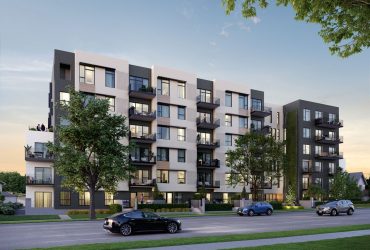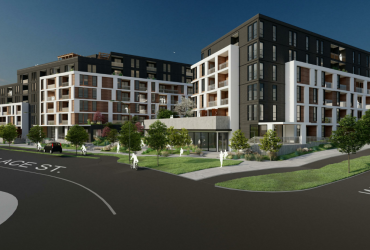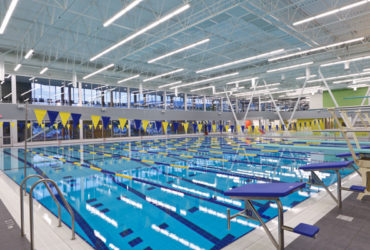LEEDing the Way
Recollective has extensive experience consulting on high performance green emergency and supportive social housing. Applying LEED Gold and carbon neutrality to social housing is a significant challenge, especially considering issues of mental illness, homelessness, addiction, and the epidemic of bed bugs. Sustainability, livability, and cost become a delicate interplay that over the years we have come to understand how to balance.
To set the framework for designing and construction green social housing in BC, Recollective was contracted by BC Housing to develop a Carbon-Neutral and LEED Gold Strategy, which we’ve been applying on over 20 buildings throughout BC.
As a trailblazer in this unique area of green building, we have completed the first LEED certified emergency and/or supportive social housing projects in BC, which include the following:
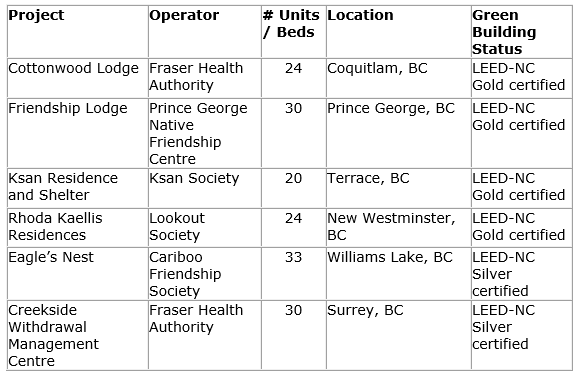
BC Housing “12 Sites”
In December 2007, the Province of BC and the City of Vancouver approved a Memorandum of Understanding to build new social and supportive housing units on 12 city-owned sites, with a goal of providing more safe, secure and affordable housing plus support services in response to the current homelessness situation. Two additional sites were later identified. The majority of the 14 city-owned sites were identified as part of the city’s Supportive Housing Strategy. The sites will provide a total of 1,506 new units of social and supportive housing.
BC Housing has committed to achieving LEED Gold and targeting carbon neutrality, not only for the housing facilities it owns and operates but also those which BC Housing has funded and that will be operated by other organizations. The “14 sites” residential non-market projects are examples of this – these sites are owned by the City of Vancouver and will be operated by various non-profit organizations.
These ambitious goals and an extremely challenging schedule meant that some workshops had to be held for all 14 design teams simultaneously, followed by charrettes for each of the individual projects. This ‘customized’ integrated design process (IDP) allowed the teams to start with a ‘leg up’ by analysing which of the previously developed strategies can be applied to the next site, as well as creating strategies to address each site’s unique challenges and opportunities. Our team used IDP for each individual project, and also at the 14 sites coordination level to review, refine, and deliver the most effective process as possible to help these ambitious projects achieve their targets.
To effectively manage the sustainability aspects of all 14 projects simultaneously, we partnered with Sustainability Solutions Group, Blue Camas, and Mamiko Yamashita. Altogether, we formed an integrated sustainability team, led by Recollective.
Below is a map and list of the 14 projects:
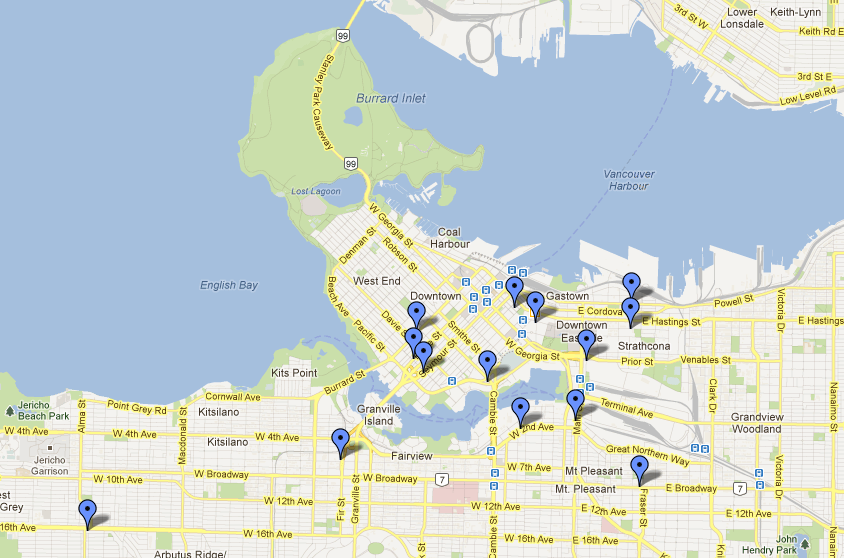
View 14 Sites in a larger map
- Karis Place at 1338 Seymour St. (Operated by More Than a Roof) – Provide 105 units of studio-style apartments with support services – LEED Gold Certified
- Station Street at 1005 Station St. (Operated by PHS Community Services Society) – Provide 80 new studio apartments for people who are homeless or at risk of homelessness – LEED Gold Certified
- Pacific Coast Apartments at 337 West Pender St. (Operated by Coast Mental Health) – Provide 96 new studio apartments for homeless and homeless at risk, including one floor dedicated for women and one other floor dedicated for young people between 19-24 – LEED Gold Certified
- First Place at 188 East 1st Ave. (Operated by Lookout Emergency Aid Society) – Provide 129 units of housing with integrated support services for people who are homeless or at risk of homelessness
- Sorella at 525 Abbott St. (Operated by Atira Women’s Resource Society) – Provide 108 units of housing with integrated support services for women who are homeless or at risk of homelessness – LEED Gold Certified
- Dunbar Apartments at 3595 West 17th Ave (Operated by Coast Mental Health) – Provide 51 units of housing with integrated support services for people who are homeless or at risk of homelessness – LEED Gold Certified
- Sanford Apartments at 1601 West 7th Ave (Operated by Katherine Sanford Housing Society) – Provide 62 apartments with support services for individuals who are at risk of homelessness. Plus, a client resource centre operated by Motivation, Power & Achievement Society on first & second floors – LEED Gold Certified
- McLaren Housing at 1295 Howe St (Operated by McLaren Housing Society) – Provide 110 units of supportive housing
- Marguerite Ford Apartments at 215 W 2nd Ave (Operated by Sanford Housing Society and RainCity Housing & Support Society) – Provide 147 units of supportive housing – LEED Gold Certified
- The Kettle on Burrard at 1134 Burrard (Operated by Kettle Friendship Society and Family Services of Greater Vancouver) – Provide 141 units of supportive housing – LEED Gold Certified
- Alexander Street Community at 590 Alexander St (Operated by PHS Community Services Society) – Provide 139 units of supportive housing
- Kwayatsut House at 2465 Fraser St (Operated by Vancouver Native Housing Society and Broadway Youth Resources Centre) – Provide 99 units of supportive housing
- The Budzey Building at 220 Princess Ave (Operated by RainCity Housing & Support Society) – Provide 147 units of supportive housing
- 1050 Expo Blvd. (Operated by 127 Society for Housing and St. James Community Services Society) – Provide 89 units of supportive housing (canceled)
Little Mountain
Recollective was also involved in one of BC Housing’s oldest social housing developments, a 15-acre property located next to Queen Elizabeth Park called Little Mountain. We were contracted by BC Housing for the redevelopment (Phase I), which involved the demolition and land clearing of more than 200 aging housing units and related infrastructure in the most sustainable manner economically feasible. Recollective guided BC Housing and the demolition team in a comprehensive Demolition Waste Management plan that resulted in 83.4% of waste diverted from landfill. Due to the contaminated nature of the site, soil remediation was done on-site and hazardous materials were treated offsite.
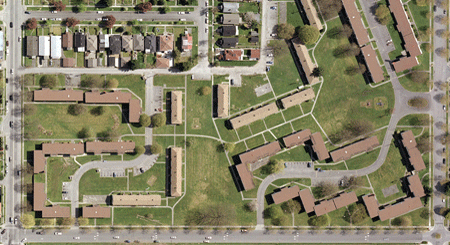
Emergency & Supportive Social Housing
- Location Various Locations, BC
- Developer/Client City of Vancouver / BC Housing
- Architects gBL Architects, Neale Staniszkis Doll Adams Architects, DYS Architecture, CJP Architects, Boni Maddison Architects, DGBK Architects
- Our Roles Sustainability Consultant, IDP Charrette Facilitator
- Green Building Certification Status 6 Gold certified, 2 Silver certified
- Awards
- 2012 Canadian Green Building Award – Karis Place
- 2011 GLOBE Award - Little Mountain Demolition
- 2010 Brownie Award People's Choice - Little Mountain
- Green Building Audio Tours


